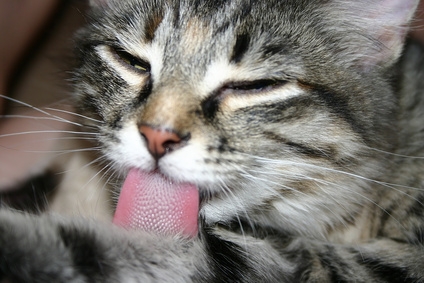
How to Care for Dissolvable Stitches After Spaying a Pet. If your dog or cat was spayed recently, the veterinarian may have used dissolvable sutures to close its incision. Dissolvable sutures are placed under the skin and do not require removal because they will eventually decompose on their own. Many vets use dissolvable sutures as opposed to typical skin sutures because it decreases the chances of the animal bothering the suture line as many pets try to pull out skin stitches on their own. Although the use of dissolvable sutures is advantageous in many ways, they do require a certain amount of care.

Prevent the pet from becoming wet in the incision area for two weeks after the spay. Even though the sutures are on the inside, it is still important to keep the suture line dry to help it heal properly. Do not allow your pet to swim or have a bath that will cause the incision area to become wet. You can sponge bathe the pet if it becomes dirty, however, take care not to expose the suture line to any water.
Place an Elizabethan or roll collar---collars that can prevent the pet from reaching its tummy---on the pet if you cannot control its licking. Although dissolvable stitches do decrease the chances of a pet bothering the incision, they do not take them completely away. Pets are curious creatures that tend to notice whenever changes have occurred on their body. Your pet may lick at the area because it thinks it's helping with the healing, or it may do so because it itches or feels different. You can take the collar off when it eats and it probably won't need the collar after 10 to 14 days past the spay.
Monitor the suture line for any signs of infection. Look at your pet's tummy daily to check the progress of its healing. Signs of infection include significant swelling and redness, discharge and bleeding. It is normal for the incision line to be a bit puffy and red immediately following the spay, but if it is seriously swollen and inflamed, the pet may have an infection and should see the veterinarian as soon as possible.
Copyright © 2005-2016 Pet Information All Rights Reserved
Contact us: www162date@outlook.com